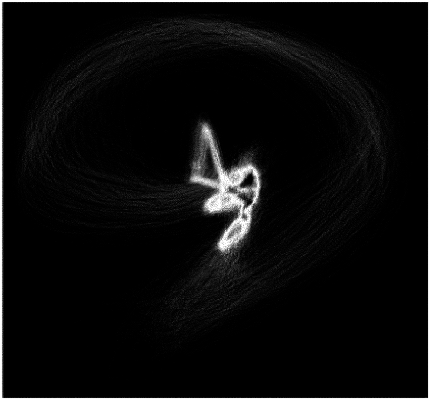| CPC G06F 3/017 (2013.01) [G01B 11/25 (2013.01); G06F 3/011 (2013.01); G06N 20/00 (2019.01); G06T 7/20 (2013.01); G06F 2203/011 (2013.01)] | 18 Claims |

|
1. A method, comprising:
recording, by a wearable computing system, sensor data generated by one or more inertial sensors of the wearable computing system, the sensor data comprising acceleration data in multiple dimensions;
projecting, by the wearable computing system, a three-dimensional acceleration pattern indicated by the acceleration data to at least one two-dimensional plane to generate at least one two-dimensional acceleration projection having a first acceleration dimension and a second acceleration dimension, where the first acceleration dimension is orthogonal to the second acceleration dimension and both the first and second acceleration dimensions have units of distance per second squared;
analyzing, by the wearable computing system, the at least one two-dimensional acceleration projection using at least one computer vision algorithm; and
providing, by the wearable computing system, feedback to a user of the wearable computing system regarding the user's movement based on the analysis of the at least one two-dimensional acceleration projection, wherein the wearable computing system is coupled to the user such that movement of the user is sensed by the one or more inertial sensors of the wearable computing system, wherein the sensor data generated by the one or more inertial sensors is caused by movement of the user, and wherein the feedback is in the form of feedback data related to an assessment of the movement of the user in the past and without a prognostication of future user movement;
wherein analyzing the at least one two-dimensional acceleration projection comprises analyzing the at least one two-dimensional acceleration projection using fractal analysis at multiple scales, including:
dividing the at least one two-dimensional acceleration projection into a plurality of successive grids of successively smaller grid scales, and for each successive grid of a given grid scale counting the number of squares in that grid filled by the at least one two-dimensional acceleration projection at that given grid scale;
plotting scaling data of the grid scale versus the counted number of squares in that grid filled by the at least one two-dimensional acceleration projection on a log-log graph; and
fitting a line or curve to the plotted scaling data.
|